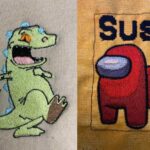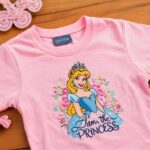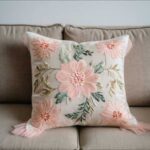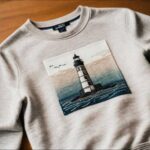Elevated Outerwear Gear
Durable Embroidery Techniques for Soft Shell Jackets
Introduction
Soft shell jackets have become a popular choice for their blend of comfort, flexibility, and protective qualities, making them ideal for a range of activities from outdoor adventures to everyday wear. Their unique construction, combining water resistance with breathability, offers both functionality and style, setting the stage for creative customization. Embroidery on soft shell jackets provides an opportunity to personalize these garments, but it also presents specific challenges due to the fabric’s characteristics and performance requirements.
Successfully embroidering soft shell jackets requires a deep understanding of both the fabric and the techniques used to enhance its durability. This article delves into the nuances of working with soft shell jackets, exploring the best practices for maintaining the integrity of the fabric while achieving high quality, long lasting embroidery. From selecting appropriate backing materials to implementing effective design strategies, this guide offers comprehensive insights to help you navigate the complexities of embroidering on these versatile jackets and achieve results that are both aesthetically pleasing and resilient.
Understanding Soft Shell Jackets
Soft shell jackets represent a versatile category of outerwear designed to offer a balance between weather protection and comfort. Unlike traditional hard shell jackets, which are primarily engineered to provide maximum protection against extreme weather conditions, soft shell jackets excel in providing a blend of flexibility, breathability, and moderate weather resistance. These jackets are constructed from a combination of woven fabrics, typically featuring a three layer construction that includes an outer layer, a middle layer, and an inner layer. The outer layer is designed to repel water and resist abrasion, often utilizing durable water repellent (DWR) coatings to enhance its resistance to rain and snow. This layer also contributes to the jacket’s durability, making it suitable for various rugged activities.
The middle layer of a soft shell jacket provides insulation, helping to retain body heat while allowing for breathability. This layer often consists of a fleece or a similar material that offers warmth without adding excessive bulk. The insulation is crucial for maintaining comfort during activities in cooler temperatures, ensuring that the wearer remains warm without overheating. The inner layer of the jacket is designed to wick moisture away from the body, ensuring that sweat and perspiration are efficiently transferred to the outer layers for evaporation. This moisture wicking property enhances the jacket’s comfort by keeping the wearer dry and preventing the buildup of moisture inside the jacket.
Soft shell jackets are favored for their flexibility and comfort, making them an ideal choice for a wide range of outdoor activities. They are particularly well suited for activities that require a high degree of mobility, such as hiking, climbing, and cycling. The soft shell material is inherently stretchable, allowing for a greater range of motion compared to more rigid hard shell alternatives. This flexibility makes soft shell jackets a popular choice for dynamic activities where freedom of movement is essential. Additionally, the fabric’s breathability ensures that excess heat and moisture are effectively managed, reducing the risk of overheating during high intensity activities.
Despite their many advantages, soft shell jackets present specific challenges when it comes to embroidery. The fabric’s stretchability, combined with its relatively thick construction, can pose difficulties for achieving a clean and precise embroidery result. Stretchable fabrics, while advantageous for movement, can cause distortion in the embroidery design if not properly stabilized. Similarly, the thickness of the fabric may require adjustments in needle size and stitching techniques to avoid damage.
Additionally, the water resistant properties of soft shell jackets must be preserved during the embroidery process to maintain the garment’s functionality. Any perforations or damage caused by the embroidery can potentially compromise the jacket’s ability to repel water, making it essential to use techniques that minimize impact on the fabric’s performance.
Understanding the unique construction and properties of soft shell jackets is crucial for selecting appropriate embroidery techniques and materials. By appreciating the balance of comfort, breathability, and weather resistance that defines soft shell jackets, one can make informed decisions about how to effectively integrate embroidery into these versatile garments while preserving their key functional attributes.

Challenges in Embroidering Soft Shell Jackets
Embroidering soft shell jackets presents a unique set of challenges that stem from the distinctive characteristics of the fabric. While soft shell jackets are highly valued for their flexibility, weather resistance, and comfort, these very attributes can complicate the embroidery process. Successfully embroidering these jackets requires a deep understanding of the fabric’s properties, as well as the application of specialized techniques that address the potential issues that can arise during embroidery.
One of the primary challenges in embroidering soft shell jackets is managing the fabric’s stretchability. Soft shell material is designed to be flexible and to allow a wide range of motion, which is a key reason for its popularity in outdoor and athletic wear. However, this stretchability can pose significant problems during embroidery. When a design is stitched onto a stretchable fabric, the fabric may stretch and distort, leading to an uneven, puckered, or misshapen embroidery design.
This distortion is often exacerbated if the fabric is not properly stabilized during the embroidery process. To address this challenge, embroiderers must carefully select and apply stabilizers that can hold the fabric in place without restricting its natural stretch. The right balance is crucial; too much stabilization can result in a stiff, uncomfortable garment, while too little can lead to design distortion.
Another challenge is the thickness of the soft shell fabric, which often includes multiple layers designed to provide insulation, water resistance, and abrasion protection. The multi layer construction of soft shell jackets can make it difficult for embroidery needles to penetrate the fabric cleanly. The thickness can cause needles to struggle or break, and can also lead to skipped stitches or uneven thread tension.
These issues can compromise the overall quality and durability of the embroidery. To mitigate these problems, embroiderers must carefully choose needle sizes and types that are appropriate for thicker materials. Additionally, they may need to adjust the machine settings, such as stitch density and speed, to accommodate the thicker fabric and ensure a smooth, consistent finish.
The water resistant properties of soft shell jackets also present a significant embroidery challenge. One of the key selling points of soft shell jackets is their ability to repel water, thanks to the water resistant coatings and tightly woven fabrics used in their construction. However, the process of embroidering a design onto the jacket involves piercing the fabric with a needle, which inevitably creates small holes. These needle penetrations can compromise the jacket’s water resistance, allowing moisture to seep through the embroidery and into the layers beneath.
This not only diminishes the jacket’s ability to protect against the elements but can also lead to water damage and deterioration of the embroidery itself over time. To address this issue, it is essential to minimize the number of needle penetrations and to consider using additional protective measures, such as applying a waterproof sealant over the finished embroidery to restore the fabric’s water resistant qualities.
Maintaining the fabric’s integrity during the embroidery process is another critical challenge. Soft shell fabrics are often engineered for durability and performance, and any damage during embroidery can undermine these qualities. For instance, repeated needle penetrations can weaken the fabric, causing it to tear or fray over time, particularly in areas subjected to high stress or abrasion. This is especially concerning for jackets intended for outdoor or active use, where durability is paramount.

To preserve the fabric’s integrity, embroiderers need to carefully plan their designs and use techniques that distribute the stress of the stitches evenly across the fabric. Choosing the right type of embroidery, such as designs with less stitch density or the strategic use of underlay stitches, can help prevent damage and ensure that the jacket remains both functional and visually appealing.
Colorfastness and thread compatibility also pose potential challenges in embroidering soft shell jackets. The threads used in embroidery must be carefully selected to ensure they are compatible with the soft shell fabric and will not fade, bleed, or deteriorate when exposed to moisture, UV light, or the various environmental conditions the jacket may encounter. Polyester threads are often preferred for this reason, as they are known for their strength, durability, and resistance to fading.
However, the specific color and type of thread must be chosen with the fabric in mind to avoid any potential issues with colorfastness, particularly when the jacket will be subjected to repeated washing or outdoor use. The wrong choice of thread can result in an embroidery design that fades or discolors, detracting from the jacket’s overall appearance and longevity.
Finally, the aesthetic challenge of ensuring that the embroidery complements the design and functionality of the soft shell jacket cannot be overlooked. The embroidery should enhance the jacket’s appeal without compromising its performance or comfort. This requires a thoughtful approach to design placement, size, and style. For example, large or intricate designs may not be suitable for areas of the jacket that experience a lot of movement or stretching, as they could cause discomfort or damage over time.
Similarly, the placement of the embroidery needs to be carefully considered to avoid interfering with the jacket’s functionality, such as covering seams, pockets, or ventilation areas. Embroiderers must strike a balance between aesthetic appeal and practicality, ensuring that the final product is both attractive and functional.
Embroidering soft shell jackets is a complex process that requires careful consideration of the fabric’s unique properties and the challenges they present. From managing stretchability and thickness to preserving water resistance and fabric integrity, each step in the embroidery process must be approached with precision and expertise. By understanding and addressing these challenges, embroiderers can successfully create durable, visually appealing designs that enhance the functionality and appeal of soft shell jackets, ensuring they stand up to the demands of both everyday wear and outdoor adventures.
Durable Embroidery Techniques for Soft Shell Jackets
Embroidering soft shell jackets requires a careful balance of technique, materials, and expertise to ensure the final design is both visually appealing and resilient enough to withstand the unique demands of the fabric. The following techniques are essential for creating durable embroidery on soft shell jackets, ensuring that the designs not only look great but also endure the rigors of regular wear and outdoor activities.
1. Stabilizing the Fabric
Stabilization is one of the most critical steps in the embroidery process, especially when working with soft shell jackets. Stabilizers provide the necessary support to the fabric during embroidery, preventing it from stretching, puckering, or shifting, which could distort the design. Given the stretchable nature of soft shell material, proper stabilization is essential to achieving a clean, professional finish.
• Choosing the Right Stabilizer: The choice between a tear away or cut away stabilizer depends on the complexity and density of the design. For simple, low density designs, a high quality tear away stabilizer might suffice. However, for more intricate or high density designs, a cut away stabilizer is recommended. Cut away stabilizers remain in the fabric after embroidery, providing long term support that prevents the design from distorting over time. This is particularly important for soft shell jackets, where the fabric’s stretch could otherwise cause the embroidery to lose its shape.
• Layering Stabilizers: In some cases, using multiple layers of stabilizer may be necessary to achieve the desired level of support. For particularly challenging fabrics or complex designs, a combination of a tear away stabilizer with a layer of water soluble topping can help maintain the fabric’s stability while ensuring a smooth finish. The water soluble topping dissolves after embroidery, leaving the design crisp and the fabric unmarked.
• Hooping Considerations: Proper hooping is another critical aspect of stabilization. The fabric should be hooped taut but not overly stretched, as overstretching can lead to distortion when the hoop is removed. Magnetic hoops can be especially useful for soft shell jackets, as they provide a secure hold without the risk of hoop burn; a common issue with more delicate fabrics.

2. Using High Density Designs
High density designs are particularly effective for soft shell jackets because they add durability and visual impact to the embroidery. However, creating high density embroidery on soft shell jackets requires careful consideration to avoid issues like puckering, stiffness, or excessive weight.
• Balancing Stitch Density: The key to successful high density embroidery is finding the right balance in stitch density. Too many stitches can make the design stiff and uncomfortable to wear, while too few stitches may not provide the desired durability. Adjusting the stitch density according to the fabric’s thickness and stretchability is essential. For soft shell jackets, it’s often advisable to reduce the density slightly and compensate with underlay stitches to build up the design’s structure without overloading the fabric.
• Layering the Design: Instead of relying solely on top stitches to create a high density design, consider using multiple layers of underlay stitches. This approach distributes the thread load more evenly across the fabric, reducing the risk of puckering and ensuring the design remains flat and smooth. Common underlay stitches for high density designs include zigzag and double zigzag underlays, which provide a stable base for the top stitches.
• Managing Thread Tension: Proper thread tension is crucial when embroidering high density designs. If the tension is too tight, the fabric may pucker or warp, especially with stretchable materials like soft shell fabric. Conversely, too loose a tension can result in loose or uneven stitches. Regularly adjusting and testing the tension settings on a scrap piece of fabric before starting the main embroidery can help achieve optimal results.
3. Selecting Appropriate Threads
The choice of thread plays a pivotal role in the durability and longevity of the embroidery on soft shell jackets. Given the active and outdoor use of these jackets, the threads must be able to withstand exposure to the elements, including moisture, UV light, and abrasion.
• Polyester Threads: Polyester threads are the preferred choice for embroidering soft shell jackets due to their strength, flexibility, and resilience. Polyester is highly resistant to fading from UV exposure, making it ideal for outdoor garments. It also resists fraying and breaking, which is crucial for maintaining the integrity of the embroidery over time. Additionally, polyester threads are less likely to absorb moisture, which helps preserve the jacket’s water resistant properties.
• Colorfastness: Ensuring that the thread is colorfast is essential, especially since soft shell jackets are often exposed to various environmental conditions and frequent washing. High quality polyester threads are typically colorfast, meaning they won’t bleed or fade when exposed to water, sunlight, or cleaning agents. This is particularly important for maintaining the vibrancy and clarity of the embroidery design over time.
• Thread Weight and Texture: The weight and texture of the thread can also impact the final appearance and durability of the embroidery. Heavier threads may provide more coverage and durability but can also add bulk to the design, which might not be desirable for all applications. Finer threads, on the other hand, offer a more delicate finish but may require more stitches to achieve the same level of coverage. The choice between these will depend on the specific design and the intended use of the jacket.
4. Utilizing Underlay Stitches
Underlay stitches are the unsung heroes of durable embroidery. They form the foundation upon which the top stitching is built, providing structure and stability to the design. For soft shell jackets, the right underlay can make the difference between an embroidery design that lasts and one that quickly deteriorates.
• Types of Underlay Stitches: The most commonly used underlay stitches for soft shell jackets are edge walk and zigzag underlays. Edge walk underlay runs along the outline of the design, providing a stable edge for the top stitches to latch onto. Zigzag underlay covers a broader area, providing support to the interior of the design. Together, these underlays help prevent the fabric from shifting or stretching during the embroidery process, ensuring that the final design remains crisp and precise.
• Strategic Placement of Underlays: The placement of underlay stitches is crucial for achieving a durable result. For areas of the design that are subject to high stress or frequent movement, additional underlay stitching may be necessary to provide extra reinforcement. Conversely, in areas where flexibility is more important, a lighter underlay may be used to maintain the fabric’s natural stretch while still supporting the design.
• Density and Length of Underlay Stitches: The density and length of underlay stitches should be adjusted based on the fabric and the design. For soft shell jackets, longer underlay stitches may be preferable, as they cover more area with fewer needle penetrations, reducing the risk of fabric damage. The underlay stitch density should be sufficient to support the top stitches without creating unnecessary bulk or stiffness.
5. Minimizing Needle Penetration
Given the water resistant nature of soft shell jackets, minimizing needle penetrations is crucial to preserving the fabric’s functionality. Each needle penetration creates a small hole in the fabric, which, if not managed carefully, can compromise the jacket’s ability to repel water.
• Choosing the Right Needle Size: Using a larger needle size can help reduce the number of stitches required to cover a design, thereby minimizing the total number of needle penetrations. However, the needle size must be carefully chosen to match the thickness and density of the fabric to avoid causing damage. For soft shell jackets, a size 75/11 or 80/12 needle is often recommended, but this can vary depending on the specific fabric and thread used.
• Ballpoint Needles: For soft shell fabrics, which are typically woven, ballpoint needles are often a better choice than sharp point needles. A ballpoint needle glides between the fibers of the fabric rather than piercing through them, reducing the risk of tearing or damaging the material. This is especially important for maintaining the integrity of the fabric’s water resistant properties.
• Reducing Stitch Count: Simplifying the design or reducing the stitch count can also help minimize needle penetrations. While high density designs are durable, they can be adapted to require fewer stitches without sacrificing quality. This can be achieved by using thicker threads, adjusting stitch length, or incorporating more underlay stitches to provide support with fewer top stitches.

6. Advanced Techniques: Heat Seal Backing
An advanced technique that significantly enhances the durability of embroidery on soft shell jackets is the application of heat seal backing. This method adds an extra layer of protection to the embroidery, ensuring that the design remains intact and the fabric’s properties are preserved.
• Applying Heat Seal Backing: Heat seal backing involves applying a heat activated adhesive to the reverse side of the embroidery. After the embroidery is complete, the heat seal backing is placed on the back of the design, and heat is applied using a heat press or iron. The adhesive bonds to the fabric, securing the threads in place and reinforcing the design.
• Benefits of Heat Seal Backing: The primary benefit of heat seal backing is the added durability it provides to the embroidery. By securing the threads, it prevents them from loosening or fraying, even after repeated wear and washing. Additionally, the backing helps to seal the needle holes created during embroidery, reducing the risk of water penetration and enhancing the jacket’s overall water resistance.
• Selecting the Right Backing: Not all heat seal backings are created equal, so it’s important to choose one that is compatible with the soft shell fabric. The backing should be flexible enough to move with the fabric while providing a strong, lasting bond. Breathable backings are also available, which allow the fabric to maintain its breathability while still providing the benefits of heat sealing.
7. Design Considerations and Placement
The placement and design of the embroidery are just as important as the techniques used to create it. Strategic design choices can enhance the durability of the embroidery and ensure that it complements the jacket’s function and aesthetic.
• Avoiding High Stress Areas: When choosing where to place the embroidery, it’s important to avoid areas of the jacket that are subject to high stress or frequent movement, such as the shoulders, underarms, or along the seams. Embroidering in these areas can lead to premature wear and tear, as the fabric is constantly being stretched and manipulated. Instead, opt for placement on the back, chest, or sleeves, where the fabric is less likely to be stretched or compressed.
• Balancing Design Complexity and Functionality: While complex, intricate designs can be visually stunning, they may not always be the best choice for soft shell jackets. Simpler, more streamlined designs are often more durable and less likely to interfere with the jacket’s performance. When creating a design for a soft shell jacket, it’s important to balance aesthetics with functionality, ensuring that the embroidery enhances rather than detracts from the garment’s overall appeal.
• Considering Wearability: The comfort and wearability of the jacket should always be a priority. Embroidery that is too bulky or stiff can make the jacket uncomfortable to wear, particularly if it’s located in areas that come into direct contact with the skin. Choosing softer threads, reducing stitch density, and placing the design in areas that don’t impact the jacket’s flexibility can help ensure that the jacket remains comfortable and functional.
8. Final Quality Control and Testing
After the embroidery is complete, it’s essential to perform thorough quality control checks to ensure that the design is durable and that the jacket’s integrity has been maintained.
• Testing for Durability: The finished jacket should be tested for durability, particularly in terms of how the embroidery holds up to stretching, washing, and wear. This might involve stretching the fabric around the embroidery to check for distortion, as well as subjecting the jacket to a series of wash tests to see how the embroidery reacts to water and detergent.
• Checking for Water Resistance: Given the water resistant properties of soft shell jackets, it’s important to test the jacket’s water resistance after embroidery. This can be done by lightly spraying water over the embroidered area and observing whether any moisture penetrates through the fabric. If water does seep through, additional measures, such as applying a waterproof sealant, may be necessary.
• Inspecting Thread and Stitch Quality: A close inspection of the thread and stitch quality is essential to ensure that the embroidery will hold up over time. Look for any loose threads, skipped stitches, or areas where the embroidery might be starting to fray. Addressing these issues before the jacket is worn can prevent more serious problems from developing later.
By carefully applying these techniques, embroiderers can create durable, high quality designs on soft shell jackets that not only look fantastic but also stand up to the demands of active use. The key lies in understanding the unique properties of the fabric, selecting the right materials and tools, and executing the embroidery with precision and care. When done correctly, the result is a beautifully embroidered jacket that retains its functionality, comfort, and style for years to come.

Enhancing Design Longevity with Heat Seal Backing
Heat seal backing is a pivotal technique in ensuring the longevity and durability of embroidered designs on soft shell jackets and similar fabrics. This method involves applying a special adhesive backing to the reverse side of the embroidery to enhance its resilience and maintain the integrity of the garment. The process and benefits of heat seal backing are integral to achieving embroidery that withstands the challenges of regular wear, washing, and exposure to environmental elements.
The primary function of heat seal backing is to reinforce the embroidery by creating a strong bond between the threads and the fabric. This backing is a heat activated adhesive that, when applied with a heat press or iron, melts and adheres to both the fabric and the embroidered threads. The result is a more stable and secure embroidery design, which helps prevent issues such as thread fraying, loosening, or detachment. The adhesive backing essentially “locks in” the stitches, ensuring that they remain in place even under the strain of regular use and movement.
One of the most significant advantages of heat seal backing is its ability to enhance the durability of embroidery without compromising the flexibility or comfort of the garment. The backing provides an additional layer of protection that reinforces the stitches without adding excessive bulk or stiffness. This is particularly important for soft shell jackets, where maintaining the garment’s natural flexibility and comfort is crucial. By using a heat seal backing, embroiderers can achieve a more professional finish that retains the soft shell’s inherent qualities while ensuring that the embroidery design stands up to the demands of outdoor activities and frequent wear.
Moreover, heat seal backing plays a critical role in preserving the water resistant properties of soft shell jackets. The process of embroidering a jacket involves puncturing the fabric with a needle, which can compromise its ability to repel water. Heat seal backing helps mitigate this issue by sealing the needle holes created during embroidery. The adhesive forms a barrier that prevents water from seeping through the embroidered area, thereby maintaining the jacket’s water resistance. This added protection is essential for ensuring that the jacket continues to perform well in wet conditions and that the embroidery remains intact and functional.
The application of heat seal backing also contributes to the overall aesthetic quality of the embroidery. By providing a smooth and even surface for the threads, the backing helps achieve a crisp, professional finish that enhances the appearance of the design. This is particularly beneficial for intricate or high density embroidery, where the precision of the design can be compromised by the fabric’s natural movement or stretch. Heat seal backing helps to stabilize the fabric, ensuring that the embroidery retains its shape and clarity over time.
Selecting the right type of heat seal backing is crucial for achieving optimal results. Heat seal backings come in various forms, including those that are specifically designed for different fabric types and embroidery needs. For soft shell jackets, it is important to choose a backing that is flexible and breathable, to ensure that the jacket maintains its comfort and functionality. Additionally, the backing should be compatible with the adhesive properties of the heat seal process, providing a strong and reliable bond without causing damage to the fabric.
The application process for heat seal backing involves several key steps to ensure effectiveness. First, the adhesive backing is cut to fit the size and shape of the embroidered design. It is then placed on the reverse side of the embroidery, ensuring complete coverage of the stitched area. Using a heat press or iron, the adhesive is activated by applying heat and pressure, causing it to melt and bond with the fabric and threads. It is essential to follow the manufacturer’s instructions regarding temperature and pressing time to achieve the best results. After the backing has been applied, the embroidery is allowed to cool and set, ensuring a secure and lasting attachment.
Heat seal backing is a valuable technique for enhancing the durability and longevity of embroidered designs on soft shell jackets. By providing additional support, preserving water resistance, and improving the overall appearance of the embroidery, heat seal backing ensures that the design remains intact and functional through extensive use and environmental exposure. The careful selection and application of this backing are crucial for achieving high quality, long lasting embroidery that complements the performance and aesthetics of the garment.

Preserving the Integrity of Soft Shell Jackets
Preserving the integrity of soft shell jackets involves a multi faceted approach that addresses the garment’s durability, functionality, and aesthetic qualities. These jackets are designed to provide comfort and protection in varying weather conditions, making their care and maintenance crucial for extending their lifespan and performance. Understanding the factors that impact the integrity of soft shell jackets and implementing appropriate care techniques is essential for maintaining their quality and ensuring they continue to serve their intended purpose effectively.
1. Understanding Soft Shell Jacket Construction
Soft shell jackets are crafted from specialized materials designed to offer a balance between weather resistance, breathability, and flexibility. Typically composed of a blend of polyester or nylon with a breathable membrane or laminate, these jackets are engineered to be both water resistant and windproof while allowing moisture to escape. The outer layer usually features a durable water repellent (DWR) finish that helps repel rain and snow. However, this finish can degrade over time due to wear, washing, and exposure to environmental elements.
Fabric Care: To preserve the functionality of the jacket, it’s important to understand and care for the fabric. Regular washing according to the manufacturer’s instructions helps maintain the DWR finish and ensures the jacket remains effective against moisture. Avoid using fabric softeners or bleach, as these can damage the jacket’s protective coatings and reduce its water resistance. Instead, use a mild detergent specifically formulated for technical fabrics.
Avoiding Over Washing: While regular washing is necessary, over washing can wear down the fabric and diminish its performance. It’s best to wash the jacket only when needed, following the care label’s recommendations for frequency. Spot cleaning minor stains or dirt can help reduce the need for full washes and preserve the jacket’s longevity.
2. Proper Drying Techniques
Drying is a critical step in maintaining the integrity of soft shell jackets. Improper drying methods can affect the jacket’s water resistance and overall performance.
Air Drying: Air drying is generally the preferred method for drying soft shell jackets. After washing, gently shake the jacket to remove excess water and then hang it up to dry in a well ventilated area away from direct sunlight and heat sources. Direct exposure to sunlight and heat can damage the fabric and DWR coating, leading to decreased water resistance and potential fabric degradation.
Tumble Drying: If the care label permits, tumble drying on a low heat setting can help restore the DWR finish by reactivating the treatment. It’s important to use a low heat setting to avoid damaging the fabric or any thermal laminates. Additionally, placing a few clean tennis balls in the dryer can help prevent the jacket from becoming too compacted or losing its loft.
3. Reapplying DWR Treatment
The DWR (Durable Water Repellant) finish on soft shell jackets can wear off over time, reducing the garment’s water resistance. Reapplying DWR treatment is essential for maintaining the jacket’s performance.
Choosing the Right Product: Select a DWR treatment that is compatible with the jacket’s fabric. There are spray on and wash in DWR treatments available, each designed to restore the water repellent properties without compromising the fabric’s breathability. Follow the manufacturer’s instructions for application to achieve the best results.
Application Process: For spray on treatments, apply the product evenly over the clean, dry jacket, ensuring that all areas are covered. Allow the treatment to dry completely before using the jacket. For wash in treatments, follow the instructions for adding the product to the washing machine, and ensure the jacket is thoroughly rinsed to remove any residue.
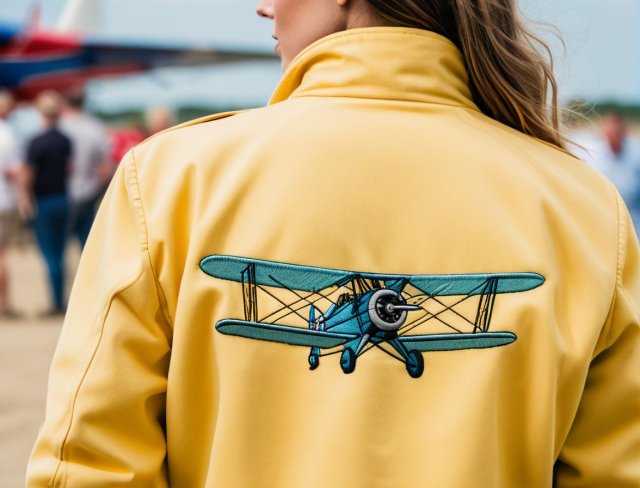
4. Addressing Fabric Wear and Tear
Soft shell jackets, like any other garment, are subject to wear and tear from regular use. Addressing these issues promptly can help preserve the jacket’s integrity and extend its lifespan.
Repairing Tears and Holes: Small tears and holes can be repaired using fabric patches or adhesive repair kits designed for technical fabrics. Clean the area around the damage thoroughly before applying the patch or adhesive. For larger tears, it may be necessary to seek professional repair services to ensure a durable and effective fix.
Maintaining Zippers and Seams: Zippers and seams are critical components of soft shell jackets. Regularly check zippers for smooth operation and lubricate them with a zipper specific lubricant if needed. Inspect seams for any signs of fraying or separation and address any issues promptly to prevent further damage.
5. Storage Considerations
Proper storage is essential for maintaining the jacket’s shape, performance, and overall condition.
Avoiding Compression: Store the jacket in a cool, dry place away from direct sunlight and moisture. Avoid compressing the jacket for extended periods, as this can affect the fabric’s loft and insulation properties. Use a wide, padded hanger to maintain the jacket’s shape and prevent distortion.
Storing in a Breathable Bag: If the jacket is not in use for an extended period, store it in a breathable garment bag rather than a plastic one. This allows the fabric to breathe and helps prevent moisture buildup, which can lead to mildew or mold.
6. Inspecting and Maintaining Embroidery
For jackets with embroidered designs, additional care is required to preserve the embroidery’s appearance and durability.
Regular Inspection: Regularly inspect the embroidery for any signs of wear or damage. Check for loose threads, fraying, or discoloration, and address any issues promptly. For minor repairs, gently trim loose threads and reinforce any areas where the embroidery may be starting to come undone.
Avoiding Abrasion: Embroidered areas can be more susceptible to abrasion, especially if they are located in high friction areas such as the sleeves or shoulder seams. To minimize abrasion, avoid contact with rough surfaces and consider applying a fabric protectant specifically designed for embroidered garments.
7. Professional Cleaning and Maintenance
For high performance or heavily soiled jackets, professional cleaning and maintenance services may be beneficial.
Specialized Cleaning Services: Professional cleaners specializing in technical fabrics and outdoor gear have the expertise and equipment to handle delicate cleaning processes. They can ensure that the jacket’s fabric and DWR finish are properly maintained, and any specific issues related to the jacket’s construction or embroidery are addressed.
Regular Maintenance Checks: Scheduling regular maintenance checks with a professional can help identify and address potential issues before they become major problems. This proactive approach can extend the jacket’s lifespan and maintain its performance over time.

Preserving the integrity of soft shell jackets (embroidered or not), involves a comprehensive approach that includes understanding the jacket’s construction, implementing proper care and maintenance techniques, and addressing any wear and tear issues promptly. By following these guidelines, users can ensure that their soft shell jackets remain functional, comfortable, and visually appealing for years to come. Maintaining the jacket’s performance not only enhances the wearer’s experience but also protects the investment made in this versatile and valuable piece of outerwear.
Conclusion
Soft shell jackets offer exceptional versatility and practicality for various activities, making them an excellent choice for both everyday wear and specialized use. When it comes to adding a personal touch through embroidery, understanding the specific challenges and employing durable techniques are essential for achieving high quality results. By mastering the intricacies of embroidering soft shell jackets, you ensure that your designs are not only aesthetically pleasing but also resilient enough to withstand the demands of active use.
Adopting the right strategies and materials, such as heat seal backing and thoughtful design placement, will enhance the longevity and functionality of your embroidered designs. Whether your embroidery project is intended for personal expression or commercial purposes, applying these best practices will help you achieve standout results that endure over time. This careful approach ensures that your soft shell jackets continue to perform effectively while showcasing beautifully crafted, long lasting embroidery.
Now that you have read through this article, feel free to SHOP for products we have created. If you are looking for something special which isn’t in our store, feel free to contact us.


